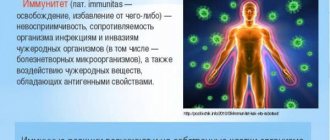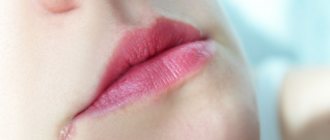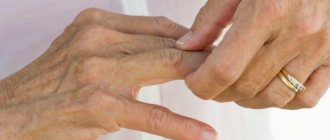The role of iron in the body
Iron is an element necessary for the body. Its most important function is participation in the construction of hemoglobin. This substance has the ability to bind oxygen particles and acts as an element that transports it to tissues in red blood cells. It also removes some of the CO2 from the circuit into the lungs (the rest is dissolved in the plasma). Iron deficiency causes anemia.
Iron also creates one of the main muscle proteins, myoglobin. Without these relationships, it is impossible to maintain muscle mass and proper functioning of the motor system.
Excess iron in the body
Excess iron in the body does not coincide with its increased level in the blood. A test of iron levels and the protein associated with iron absorption, ferritin, shows how high the iron concentration is during the test. This level may be increased, for example, due to a temporary increase in the breakdown of red blood cells or increased iron availability due to a change in diet.
However, if its levels in the body are too high, these results are accompanied by increased levels of transferrin protein and increased saturation of this compound with iron.
Causes of secondary excess iron in the body
The causes of secondary iron excess associated with body disorders are:
- increased hemolysis of blood cells (for example, after multiple transfusions)
- too much iron in the diet, medications, or supplements
- steatosis or viral hepatitis
- chronic pancreatitis
- cystic fibrosis
- alcoholic illness
- some forms of leukemia or myelodysplastic syndromes
This may be the introduction of certain medications (for example, antibiotics - chloramphenicol) or intoxication with heavy metals (for example, lead, zinc).
Primary causes of excess iron in the body
The primary cause of excess iron deposition in the body is a genetic defect. This causes increased absorption of iron from the gastrointestinal tract and accumulation of this metal in the tissues of various organs.
The disease is inherited in an autosomal recessive manner, which means that you must receive the altered gene from each parent, and it is located on the X or Y chromosomes.
Hemochromatosis genes are relatively common - on average one person per hundred (1%) of the population. Although this disorder is not sex chromosome related, it is definitely more common in men.
Nutrition at low and high levels
The level of iron in a person’s blood is greatly influenced by nutrition, and by consuming certain foods, you can adjust the content of this element.
An elevated level of iron in the blood may be a sign of the following pathologies:
- Various anemias - thalassemia, hemolytic, folate deficiency, aplastic and so on.
- Hemochromatosis is excessive absorption of iron in the gastrointestinal tract.
- Hemosiderosis - develops with frequent blood transfusions, overdose of iron-containing drugs.
- Disturbances in the process of hematopoiesis in the bone marrow.
- Liver damage.
A deficiency of an element in the body may have the following reasons:
- Cirrhosis of the liver.
- Stagnation of bile.
- Iron-deficiency anemia.
- Nephrotic syndrome.
- Prolonged bleeding.
- High need for iron.
- Excessive accumulation of hemosiderin.
- Manifestation of chronic renal failure.
- Lack of ascorbic acid in the diet.
- Nutritional deficiency – an element is not supplied or is supplied with food in insufficient quantities.
- Vapor distribution deficiency due to osteomyelitis, rapidly growing tumor, inflammatory processes, heart attack, rheumatism.
Symptoms of excess iron in the body
A symptom of excess iron , both primary and secondary, is sideroblastic anemia. It causes weakness, dizziness, scarred eyes, pale skin, fatigue and difficulty breathing after exercise. If the cause of such anemia is temporary, the symptoms subside quite quickly and do not require special treatment.
Treatment of primary changes includes the administration of vitamin B6. If hemochromatosis is secondary, chelating agents are administered (that is, they bind iron into complexes, which are then excreted from the body). To compensate for the patient's condition, blood transfusions are usually given.
Chronic excess of iron in the body causes sequential deposition of this element in the tissues of various organs. Because the process is progressive, the clinical picture develops slowly - the first significant symptoms usually appear in people aged 40-50 years.
The most noticeable changes concern the skin - it acquires a gray-brown, sometimes even graphite, metallic tint. This is due not only to iron deposition in the skin, but also to damage to the pituitary gland due to overproduction of melanin.
Iron deficiency: causes and symptoms
Due to such a wide impact on the human body, a lack of iron in the body can cause certain consequences:
- Nervous system disorder. There is a feeling of irritability and short temper. With iron deficiency, a person may often experience migraines, tachycardia and dizziness.
- Changes in taste buds. Associated with changes in the structural surface of the tongue - dryness, unevenness, cracks and atrophy of the taste buds.
- Gastrointestinal diseases. Appetite worsens, frequent bloating and belching, constipation, problems with swallowing food.
- Muscle and joint pain, frequent feelings of fatigue and lethargy.
- Inhibition in the development of children (mental and physical).
- The immune system deteriorates, frequent colds and infectious diseases are possible.
- The likelihood of cancer increases.
- A feeling of chilliness occurs due to a decrease in body temperature.
Iron deficiency leads to disruptions in metabolic processes and the functioning of the thyroid gland. All this will not only stall the process of losing weight, but will also have the opposite effect - gaining kilograms.
Iron is very important for women, especially during pregnancy. Its deficiency can negatively affect the dynamics of fetal development. As we see, women need this element to a greater extent, this should especially be taken into account if you are planning a pregnancy. In such cases, a lack of iron in the body causes the following symptoms:
- constant fatigue, dizziness;
- even with minor physical activity, severe shortness of breath appears;
- cardiopalmus;
- insomnia;
- the functioning of the gastrointestinal tract is disrupted;
- difficulty swallowing food, loss of appetite;
- frequent depression;
- arms and legs go numb;
- susceptibility to colds and various infections;
- craving for the smells of industrial paint, gasoline, etc.;
- hair and nails become brittle;
- the skin has a pale tint;
- dry skin;
- decreased performance;
- the appearance of jams (cracks in the corners of the lips);
- heels are cracking.
Thus, a lack of iron not only worsens the internal condition, but also negatively affects a person’s external appearance. Therefore, if you decide to purchase another expensive product for nails or hair, you should stop and think about the problems inside the body. By taking a general blood test, you can find out about your iron levels. In men it should be at least 130 per liter of blood, in women - 120.
Anemia or iron deficiency, unfortunately, is a common occurrence today. It affects a large number of people, mostly women. The reasons for this are the small amount of consumption or poor absorption of iron by the body.
Causes of iron deficiency in the body:
- unhealthy diet, adherence to strict diets, fasting, vegetarianism;
- during the menstrual cycle, a woman’s hemoglobin level decreases;
- lack of vitamin C, which is responsible for the absorption and breakdown of iron in the human body;
- lack of vitamins B12 or C, which promote iron absorption
- gastrointestinal diseases that impair the absorption of iron;
- exhaustion of the body: stress, chronic fatigue, insomnia.
Thus, the main reason for the lack of iron in the body is poor diet, or rather, low consumption of iron-containing foods.
Another common cause of element deficiency is iron deficiency anemia, which predominantly affects children. In addition to the listed circumstances that affect the decrease in the amount of iron, there are also food products that also reduce the dose of this microelement:
- dairy products, especially milk, so many doctors advise cooking porridge in water, as well as cheese, cottage cheese, yogurt;
- strong coffee and tea (no more than 2-3 servings per day);
- excess calcium, which interferes with the absorption of iron and “pushes” it out of the body.
Thus, we have found out the reasons for the lack of iron, now we will consider the reasons for the excess of iron in the human body.
Excess iron in the body
The human body is a very complex system that only works fully with the correct balance of elements. A person receives almost all vitamins and microelements from food and water. Some of them do not stay in the body and are excreted daily, and some have the ability to accumulate. Iron is one of the most abundant elements in nature, and it can be stored in the liver and pancreas. Everyone knows about the danger of a lack of iron in the blood - low hemoglobin, which causes anemia and even fainting. At the same time, few people think that an excess of iron is just as harmful as its deficiency.opentheme.ru
There is a disease caused by excessive iron in the blood. It is called hemochromatosis, and is often hereditary. With this disease, the absorption of iron by the body is impaired, the element accumulates in the tissues, poisoning them from the inside. People with metabolic disorders, diabetes mellitus and other chronic diseases are susceptible to this disease. Hemochromatosis requires regular monitoring by a doctor who will prescribe medications to normalize metabolism in the body.
In other cases, excess iron is acquired, i.e. excess elements enter the body with food, water and the atmosphere.
Causes of acquired iron excess
- Excessive iron saturation of drinking water. This depends on the region of residence and the quality of filtration of the water itself, but water, in principle, can oversaturate the body with any element that it contains.
- Uncontrolled intake of large doses of iron supplements.
- Alcoholism.
- Chronic liver diseases.
- The presence of a special gene responsible for excessive accumulation of iron. Every seventh inhabitant of the planet has such a gene, and it is also inherent in the Scandinavian nation. In most cases, it is in a latent state and does not make itself felt unless provoked by bad habits.
It is almost impossible to get an excess of iron from food, since iron is well absorbed, and regular food does not contain it in such quantities as to cause illness. But you can easily get less iron.
Diet for high iron levels in the blood
A high level of hemoglobin in the blood significantly increases the viscosity of the blood, increases the likelihood of its clotting, which is why blood clots form, and also increases the load on the internal walls of the vessels (which subsequently causes them to lose tone and become deformed).
What do doctors recommend doing if you have elevated hemoglobin? First of all, adjust your diet, include foods that help normalize the concentration of blood cells, and also slow down the synthesis of new hemoglobin molecules.
What diet should you follow for this? Which foods should you definitely add to your diet, and which should you completely exclude?
How does diet affect hemoglobin?
According to research , hemoglobin levels actively increase when consuming foods rich in:
- iron;
- vitamins A, C, E, B-group;
- omega-3 unsaturated fatty acids (as well as omega-6 and omega-9).
Accordingly, they should be excluded, if possible, from the diet (not completely, consuming in a minimal amount purely to maintain the correct balance of nutrients in the body).
The hemoglobin molecule consists of protein (globin) and iron. The process of their connection is stimulated by the above-mentioned vitamins and micronutrients.
Even if you consume foods that are not rich in iron, but there is a deficiency of vitamins in the body, the bioavailability of iron will be reduced to a minimum. That is, it simply will not be absorbed in the required quantity.
In what cases does high hemoglobin most often occur? If the patient’s diet is dominated by:
- products of animal origin (meat, meat by-products);
- seafood;
- citrus;
- chocolate (and other desserts that contain large quantities of cocoa).
Moreover, in such patients the amount of plant foods rich in fiber in the diet is minimal.
How to reduce it in men?
Men traditionally have a slightly faster metabolism than women. Often, increased hemoglobin is a consequence of a violation of the water-salt balance.
The fix for this is extremely simple - you need to drink more , you can also include honey in your diet (this is the richest product in mineral microelements, which help normalize the water-salt balance).
It should also be noted that a whole range of metabolic processes in the male body is regulated by testosterone (a sex hormone). With its deficiency in the blood, metabolism slows down, glucose is actively transformed into fatty compounds, and protein breakdown is also slow.
How to normalize testosterone levels? Doctors recommend including aphrodisiac foods in your diet. These include many spices, as well as garden herbs. But alcohol should be completely abandoned during the treatment period; it is especially important not to drink red wine - this drink dramatically increases the level of hemoglobin in the blood.
It is also important to sharply limit the consumption of fish and seafood, which increase hemoglobin. The body should get proteins from lean varieties of meat, the best option is chicken breast, since it contains a minimum of fat, and there is also much less iron than in pork or beef.
Men are also recommended to comprehensively reduce the number of calories consumed daily and stick to 1.5 – 2 thousand kilocalories per day (with an average norm of 3000 kilocalories).
This will help reduce the load on the gastrointestinal tract and speed up the digestion of foods rich in complex carbohydrates.
Thus, the body will receive a sufficient amount of energy, but the absorption of protein foods (these foods contain more iron) will slow down.
Another feature of the diet for men is a complete, varied diet. It is important to eat at least 4–6 times a day, in small portions. This will also help normalize blood viscosity and normalize hemoglobin balance.
Physical exercise and vitamin D (stimulates the accumulation of calcium in some tissues) are the best ways to level out the age-related decline in testosterone. Therefore, the most effective thing at this age is to simply walk in the fresh air and sunbathe as often as possible. The body does not receive as much vitamin D from food as it does in epithelial cells when exposed to ultraviolet radiation.
How to lower it in women?
The female body's need for iron and B vitamins is higher than that of the male body. Therefore, strict restriction of meat dishes is strictly contraindicated.
Doctors recommend giving preference to fermented milk products that reduce hemoglobin - they contain calcium, which best reduces the bioavailability of iron and helps normalize the hemoglobin balance in the blood.
The most calcium is found in goat's milk, cottage cheese, fatty sour cream, kefir, and fermented baked milk.
Physical activity is also extremely important for women - it speeds up metabolism, normalizes the biochemical composition of the blood, and also helps to normalize hormonal levels, which also indirectly affects the production of hemoglobin.
Women should also include the following foods in their diet:
- cereal porridge;
- baking and flour (in moderation, may increase symptoms of toxicosis in the early stages of pregnancy);
- green vegetables and fruits.
But you should avoid fish, nuts, and natural chocolate (it is better to give preference to white or milk).
Doctors also recommend that women temporarily increase the amount of sweets they consume (ideally, eat desserts based on fermented milk products). But you shouldn’t overuse it - excess glucose in the blood increases blood viscosity exponentially.
6 permitted products
To reduce hemoglobin as quickly as possible, nutritionists recommend including calcium-rich foods in your diet. Should be included in the plan:
- Hard cheese. Parmesan is the most useful - 100 grams of this cheese contains 1200 mg of calcium. True, if you eat it in large quantities, there is a high probability of getting gastrointestinal irritation.
- Condensed whole milk. It is only slightly inferior to cheeses in terms of calcium concentration. It is also a source of easily digestible glucose. But it is worth remembering that condensed milk is a rather “heavy” product for the stomach and has a choleretic effect, which can even cause heartburn or even exacerbation of gastritis.
- Milk. It contains the most calcium. By the way, there is almost 2 times more of it in goat than in cow. Therefore, it is fermented milk products that most quickly reduce hemoglobin.
- Persimmon. Per 100 grams of this fruit there is about 120 mg of calcium. It also contains a huge amount of fiber, which helps normalize the functioning of the gastrointestinal tract, as well as the water-salt balance in the body. Persimmon is also recommended for chronic constipation.
- Boiled shrimp. They contain slightly less calcium than persimmons. But they help normalize the balance of cholesterol in the blood, reducing the likelihood of blood clots and cholesterol plaques.
- Chicken eggs. You just need to eat the white, not the yolk (it contains a large amount of iron). It is better boiled or fresh, rather than fried.
8 prohibited foods
The following foods help increase hemoglobin:
- Pork, beef, rabbit. Almost all meat products are rich in B vitamins, essential amino acids, and iron, which is precisely what is necessary for the production of hemoglobin. It is better to replace all of them with dairy products or lean meat (poultry is an ideal option).
- Beet. Rich in vitamins E, B-group and iron. Moreover, all of these nutrients are preserved even during thermal cooking, so beets cannot be consumed in any form.
- Apples. Among fruits, they are the richest in iron and ascorbic acid. If you have apples, you should give preference to sour varieties - they have less iron than sweet ones.
- Red wine. This is the only alcohol that significantly increases hemoglobin. And at the same time, it increases blood viscosity, which directly increases the risk of blood clots and cholesterol plaques. But with low hemoglobin, drinking only 50 - 75 milliliters of red wine per day helps normalize the balance of iron in the blood in just 4 - 5 days.
- Seafood. Rich in iron, iodine, B vitamins and unsaturated fatty acids (including omega-3 and omega-6). Particularly “dangerous” are fatty fish, as well as red and black caviar. If the hemoglobin level is inadequate, they should definitely be abandoned.
- Legumes. Rich in omega-3 and iron. This also includes peas and beans. These microelements are preserved in legumes both during heat treatment and drying.
- Buckwheat grain. Among cereals, buckwheat is the only one that increases hemoglobin due to its high iron content. It is worth minimizing its consumption or preparing milk porridge.
- Citrus. Among exotic fruits, they contain the highest concentration of ascorbic acid, which increases the bioavailability of iron. Instead of citrus fruits, it is better to give preference to green fruits and vegetables (with the exception of apples and legumes).
Source: https://zhivizdravo.ru/info/dieta-pri-povyshennom-zheleze-v-krovi/
Symptoms of iron overload
There is no need to undergo tests to identify problems with iron in the body. All signs of a violation can be seen with the naked eye. You should especially be wary of:
- Yellowing of mucous membranes. The palate, sclera, and tongue acquire a yellowish tint - this is a signal of liver problems. This sign often signals jaundice and an excess of iron.
- Pale skin, apathy.
- Heart rhythm disturbance.
- The presence of pigment spots on the hollows and inner sides of the limbs.
Excess iron
Excess iron is a very serious and common problem caused by excess iron in the body.
Iron is one of the most common chemical elements in nature and, naturally, an essential trace element for the human body. The human body contains approximately 3.5 to 4.5 grams of iron. 2/3 are in the blood, 1/3 in the liver, bone marrow, muscles and spleen.
Iron performs many functions in our body:
- supports the functioning of the immune system;
- participates in the transport of oxygen throughout the body;
- neutralizes toxic substances entering the body;
- participates in the formation of enzymes and red blood cells;
- supports the synthesis of thyroid hormones;
- important for good condition of skin, nails and hair;
- participates in regeneration processes in the body.
Causes of excess iron in the body
Factors that lead to excess iron in the body:
- Iron content in drinking water;
- Oxygen starvation caused by large amounts of exhaust gases in cities. In the body, the lack of oxygen is compensated by an increase in hemoglobin production;
- Taking large amounts or a long time of iron supplements;
- Alcoholism;
- Receiving several blood transfusions;
- The presence in the body of a gene that causes the body to accumulate iron (it is also called the “Celtic gene”, since its presence is mainly observed in the inhabitants of Scandinavia). It is present in 15% of people, but in most it is dormant.
The daily dose of iron is very approximate. The absorption of this microelement largely depends on the condition of the body, to determine which it is necessary to do blood tests. The approximate daily iron requirement for women is 18 mg, for men – 10 mg. The highest daily iron requirement for pregnant women in the second half of pregnancy is 33 mg.
Do's and Don'ts
- It is necessary to monitor the fluid consumed.
- Include porridge in your diet: rice, pearl barley, millet, buckwheat, oatmeal.
- Introduce as many vegetables into your diet as possible, and you can eat them both raw and thermally processed. But cooking is preferable, since such foods naturally contain less iron. The best vegetables are zucchini.
- Eating fruits. The absorption of iron from plant foods is several times less than from meat. The exception is red fruits and berries; they contain substances that increase the growth of hemoglobin.
- We exclude alcohol. Alcohol, when combined with iron, destroys the liver as it forms harmful elements. Iron absorption increases with alcohol consumption, and often higher levels are observed in people who abuse alcohol.
- Severely limit your consumption of fish, such as sushi, since the red fish they contain contains heme iron. The condition can also worsen due to infectious diseases if there are dangerous bacteria in the fish.
- Refusal of sweets and flour products.
- Eating lean meats. Red meat and liver should be completely avoided, as these products stimulate the production of hemoglobin.
- When consuming various food supplements, it is necessary to exclude iron-containing vitamin supplements. Vitamin C helps in the absorption of iron; it should not be taken in tablet form. Natural juices of natural origin are not dangerous.
- Cheese, legumes, greens and grapes should also be present in the diet.
Cheese and legumes
By remembering the basic rules of what you can and cannot eat if you have high hemoglobin, you can quickly improve your health.
Food with high hemoglobin can be very tasty and healthy if you introduce into your diet, for example, tofu cheese, apricots, lentils or spinach, and all varieties of grapes. Green salad, strawberries, pineapples. Sometimes you can include seafood in your diet, but only well-cooked ones.
Sample menu for correcting hemoglobin levels:
- Morning breakfast: rice casserole and tea or herbal decoction with mint.
- You can snack on a handful of nuts.
- For lunch you can eat pea soup, baked fish with pasta and cheese.
- We have a snack again - whole grain bread and fruit.
- For dinner, boiled chicken fillet with herbs. Grapes and green tea.
In just two weeks you can normalize the level of iron in your blood. This is only a sample menu for correcting hemoglobin levels in the body; the choice of products is very large.
Calcium, which is contained in dairy products, interferes with the absorption of iron from the intestines, so it is necessary to include dairy products in the menu. The fat content in milk and kefir should be 2.5%, and in cottage cheese no more than 9%.
Boiled eggs can be eaten without the yolk. Eating light herbal salads with the addition of chickweed and chickweed is encouraged; cabbage salad is very healthy.
It must be remembered that eating with high hemoglobin means excluding fatty foods from the diet. Don't forget about vitamins. Additionally, in case of high hemoglobin, it is necessary to add natural vitamins to food; vegetable oils can be a source.
Symptoms of excess iron
Symptoms of excess iron:
- yellow discoloration of the skin, tongue, palate and sclera;
- liver enlargement;
- itching;
- heart rhythm disturbances;
- poor general condition;
- thinness;
- pallor;
- pigmentation on the palms and places of old scars, in the armpits.
Excess iron in the body also complicates the progression of Alzheimer's and Parkinson's diseases. Even if there are symptoms of iron excess, an accurate diagnosis can only be determined after a biochemical blood test.









